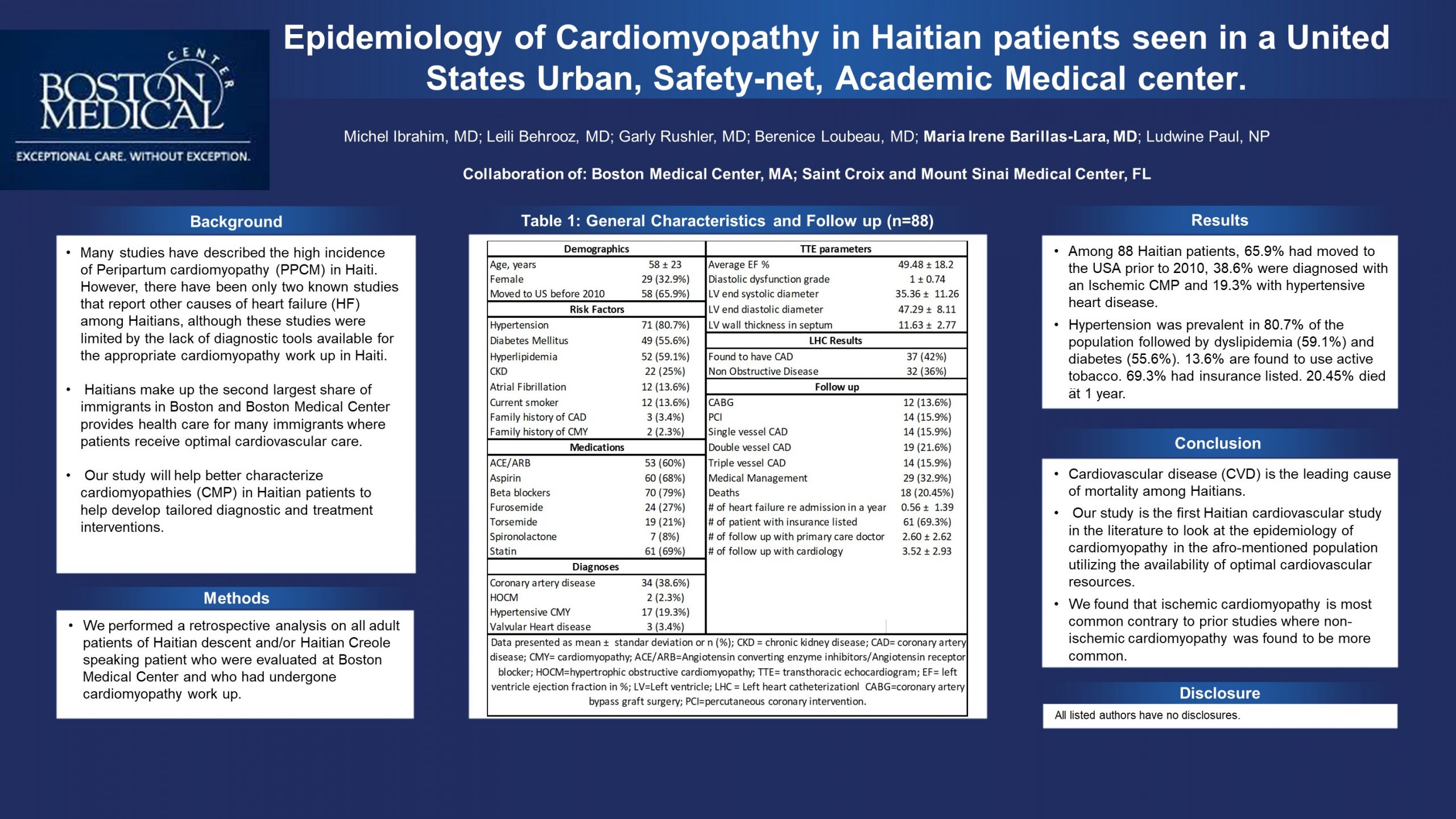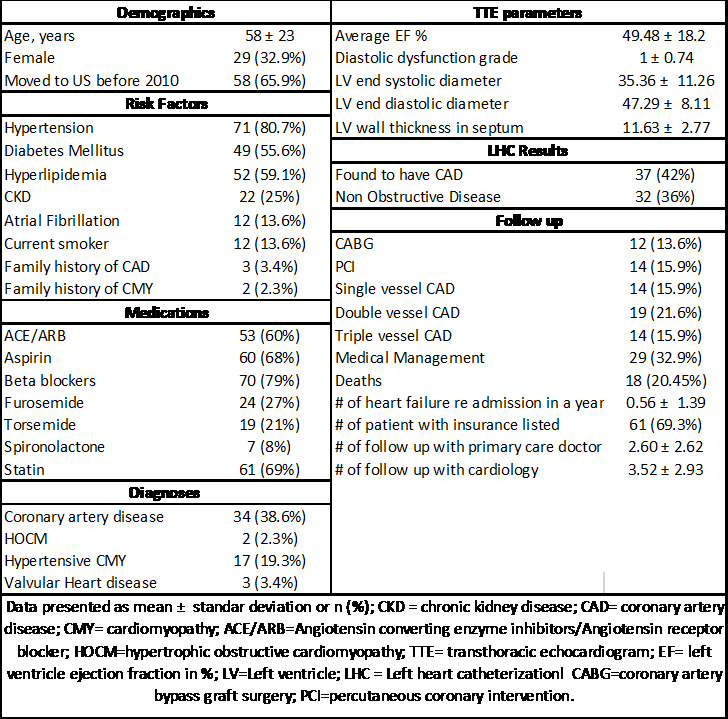Research Week 2022 – Maria Irene Barillas Lara, MD

Epidemiology of Cardiomyopathy in Haitian patients seen in a United States Urban, Safety-net, Academic Medical center.
Michel Ibrahim, MD1; Leili Behrooz, MD1; Garly Rushler, MD2; Berenice Loubeau2, MD; Maria Irene Barillas-Lara, MD1; Ludwine Paul, NP1
Collaboration of:
- Boston Medical Center, MA;
- Saint Croix and Mount Sinai Medical Center, FL
Background:
Many studies have described the high incidence of Peripartum cardiomyopathy (PPCM) in Haiti. However, there have been only two known studies that report other causes of heart failure (HF) among Haitians, although these studies were limited by the lack of diagnostic tools available for the appropriate cardiomyopathy work up in Haiti. Haitians make up the second largest share of immigrants in Boston and Boston Medical Center provides health care for many immigrants where patients receive optimal cardiovascular care. Our study will help better characterize cardiomyopathies (CMP) in Haitian patients to help develop tailored diagnostic and treatment interventions.
Methods:
We performed a retrospective analysis on all adult patients of Haitian descent and/or Haitian Creole speaking patient who were evaluated at Boston Medical Center and who had undergone cardiomyopathy work up.
Results:
Among 88 Haitian patients, 65.9% had moved to the USA prior to 2010, 38.6% were diagnosed with an Ischemic CMP and 19.3% with hypertensive heart disease. Hypertension was prevalent in 80.7% of the population followed by dyslipidemia (59.1%) and diabetes (55.6%). 13.6% are found to use active tobacco. 69.3% had insurance listed. 20.45% died at 1 year.
Conclusion:
Cardiovascular disease (CVD) is the leading cause of mortality among Haitians. Our study is the first Haitian cardiovascular study in the literature to look at the epidemiology of cardiomyopathy in the afro-mentioned population utilizing the availability of optimal cardiovascular resources. We found that ischemic cardiomyopathy is most common contrary to prior studies where non-ischemic cardiomyopathy was found to be more common.

Table 1: General Characteristics and Follow up (n=88)